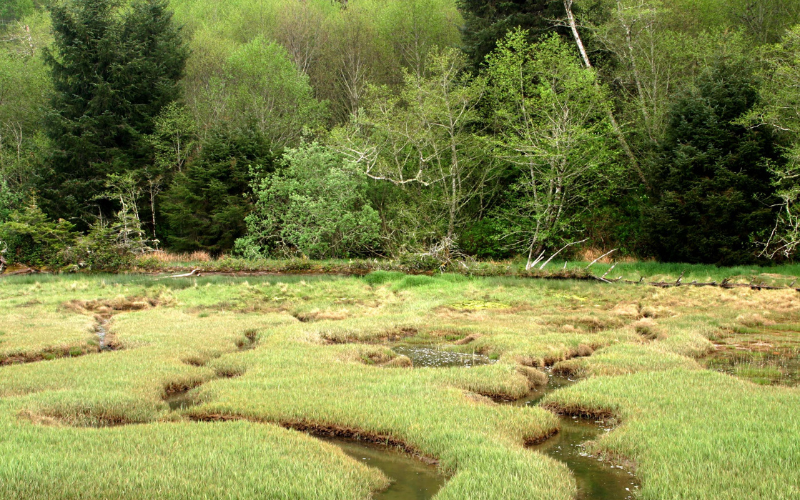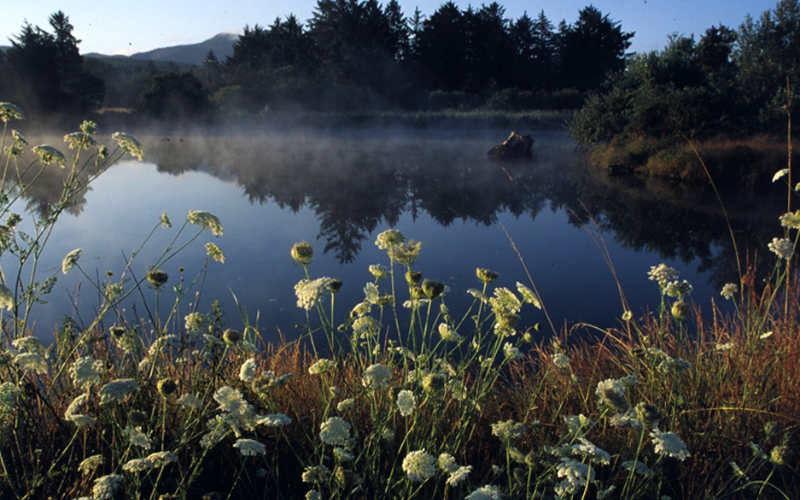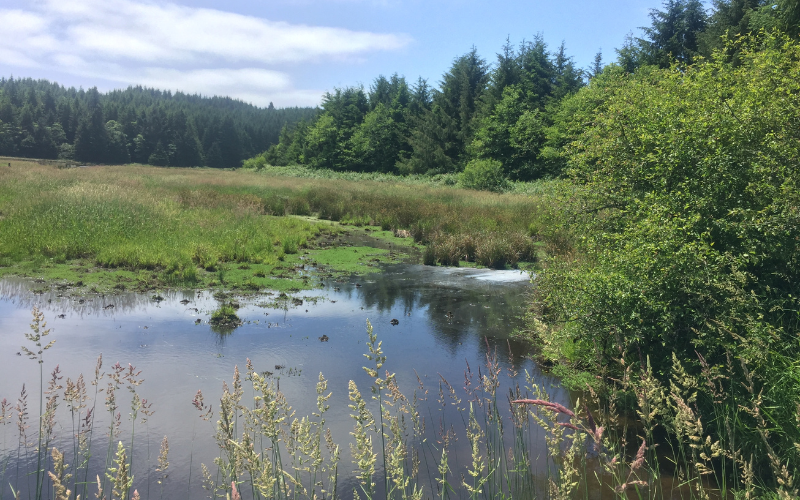
On the Oregon Coast, when we think of important ecosystems in terms of carbon sequestration and resiliency against climate change, the ocean and the rainforest may be the first things that come to mind.
But our area is fortunate to have another type of system that is equally critical for these purposes, among others: our coastal wetlands.
Generally speaking, wetlands are any type of land area that is saturated or flooded with water either seasonally or year-round. Coastal wetlands include saltwater marshes, mangroves, coral reefs, estuaries and lagoons. Inland wetlands includes areas such as marshes, peatlands, swamps, lakes, rivers and floodplains.
All of North Coast Land Conservancy’s habitat reserves on the Oregon Coast contain wetlands of some form or another, and “we have conserved so many different types of wetlands,'” says Stewardship Director Melissa Reich, “from Sitka-spruce swamp at Blind Slough and interdunal lakes in the Clatsop Plains to the peat-moss-covered Gearhart Fen and created wetland at Clear Lake.”
There is also our Neacoxie Wetlands Habitat Reserve in Gearhart—which encompasses spruce and hemlock forest and areas of open water—and the Tillamook River Wetlands—which are part of a large project to restore tidal floodplains—and a variety of reserves on the Warrenton peninsula. Plus, our Thompson Creek and Stanley Marsh Habitat Reserve in Seaside that includes a tidally influenced floodplain and is brimming with wildlife. We’ll be out there planting willows for our hands-on stewardship event Love the Beaver on Feb. 15, and volunteers are welcome!
In general, Melissa adds, “Our wetland properties are home to some of our most unique plant and wildlife species, including carnivorous plants, like sundews and Darlingtonia; skunk cabbage; cottongrass; and petaltail dragonflies, to name a random few.”

With World Wetlands Day being recognized on Feb. 2, as it is annually, it’s the perfect time to celebrate the importance of wetland systems—here on the coast and beyond—and to reflect on how we can collectively work to protect and restore them. Unfortunately, wetlands are threatened by impacts such as drainage, pollution from waste and chemicals, and invasive species, and about 35 percent of the world’s wetlands have disappeared in the past 50 years.
“We are losing wetlands three times faster than forests,” says Dr. Musonda Mumba, the Secretary General of the Convention on Wetlands, in her message about World Wetlands Day. “There is an urgency to raise global awareness on wetlands to arrest and reverse their rapid loss and encourage actions to restore and conserve these vital ecosystems.”
World Wetlands Day marks the 1971 adoption of the Convention on Wetlands in the city of Ramsar in Iran. The United Nations has observed World Wetlands Day since 2021.
The theme for this year is “It’s Time for Wetland Restoration,” with an array of events being organized across the globe to highlight the value of wetland systems and inspire their conservation.

A few key benefits of restoring wetlands include:
- Reviving biodiversity: Approximately 40 percent of the world’s species live or breed in wetlands. Restoring wetlands powers the local food chain and attracts wildlife.
- Replenishing and filtering the water supply: Wetlands naturally filter water, remove pollutants, and enhance the local water supply.
- Storing carbon: Specific types of wetlands (especially intertidal marshes, peatlands, mangroves, and seagrass beds) are exceptionally efficient carbon sinks.
- Mitigating the impact of floods and storms: Restored wetlands can act as sponges against excess rainfall and flooding, buffer coastal storm surges, and shield communities in extreme weather.
- Enhancing well-being: Revitalized wetlands provide a place to relax, experience nature, and enjoy a sense of satisfaction at their resurgence.
Learn more about wetland restoration and the actions we can take as communities to care for these precious ecosystems on the World Wetlands Day website.
Comments